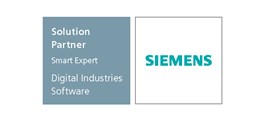MTU Maintenance GmbH
Adaptive Machining | Case Studies
Fully automated repair of Nozzle Guide Vanes
The Problem
The repair of Nozzle Guide Vanes (NGV’s) usually involves a number of processes. These include removal of thermal barrier coatings, inspection, brazing to fill cracks and surface erosion and ultimately, recoating. An unfortunate side-effect of the brazing process is that the gas-path surfaces no longer conform to the desired shape and the cooling holes often become filled with new braze material. Brazing also leaves the component in a very rough state with inconsistent wall thickness and aerofoil geometry, symptoms that have been relieved in the past by manual blending and polishing.
The Solution
TTL developed an adaptive repair process that addressed these problems. Using a CNC measuring machine (CMM) equipped with a high resolution stripe laser measuring device, the complete gas path surfaces were scanned, and the resulting data captured onto a computer.
The fully automatic scanning cycle - which took around two minutes - generated a data set of approximately 150,000 points which was processed and analysed by the Adaptive Machining software, resulting in the generation of 5-axis machining paths, unique to each individual component.
Ultimately, a completely new set of 5-axis machining paths were generated to remove all unwanted braze material from the entire gas path leaving a part which conforms to stringent surface finish, external geometry and wall thickness requirements.
To reduce the need for operator intervention, an Erowa Robot Compact pallet handling system has been integrated into the solution. Extensive use is made of the Erowa PowerChuck zero point tooling to facilitate accurate transfer of parts from the CMM to the machine tool and as parts are loaded into the cell, the component type and ID are identified uniquely. With the use of Erowa’s Manufacturing Control software the cell can operate with a theoretical batch size of 1, and the potential for 18 hours continuous lights out operation.

